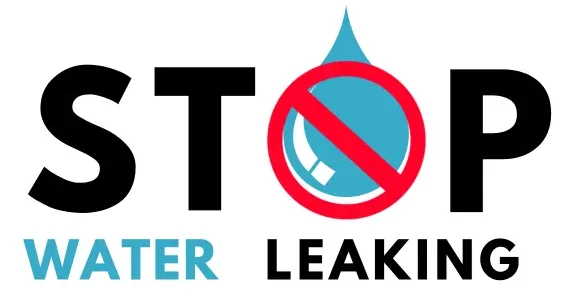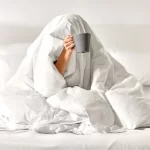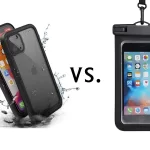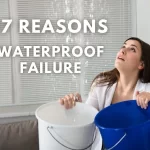Waterproof fabrics are widely used in the world. But all of these are not eco-friendly. Here is the list of eco-friendly waterproof fabrics that you can use for your purpose.
These are the best eco-friendly waterproof fabrics that you can find on the market. Recycled Polyester, TPU (Thermoplastic Polyurethane), Waxed Canvas, Oil Cloth, Recycled Polytetrafluoroethylene (PTFE), Recycled Nylon, and X-Pore.
Eco-friendly fabrics are made with biodegradable materials. When you buy a waterproof material, check whether these biodegradable materials are included, keep read on all types of eco-friendly waterproof fabrics.
How to Recognize the Eco-Friendly Waterproof Fabrics?
When you are going to buy recycled textiles, how do you know exactly the textile is recycled. This is a bit difficult. To prevent this, there is a Global Recycled Standards (GRS) for textiles. So there is a pretty good way to recognize recycled textiles globally. All these data are extracted from the Global Recycled Standards document. Source
B1 Labeling Products as GRS Certified
Products qualified for GRS labeling
B1.1a For a product to be sold with any reference to the standard, a Transaction Certificate
must have been issued for that specific product in the last B2B transaction.
B1.1b The product must contain at least 50% recycled content.
B1.1c Only Certified Organizations may label products with reference to the GRS.
B1.1d If products are being identified as certified to the GRS, then the logo must be used, following the
design specifications of Section A3.
Use of the GRS logo is not mandatory unless the GRS is mentioned on the product.

Optional Additional Language for GRS Labeled Products
B1.3a “Pre-consumer” or “post-industrial” (PIR) and “post-consumer” (PCR) may also be used to
describe the recycled material; any percentage amounts must be accurate. Separate materials
must be identified with accurate percentages.
Examples:
• “contains 80% recycled polyester”
• “contains 80% post-consumer recycled polyester”
• “contains 80% post-consumer and pre-consumer recycled polyester”
• “contains 40% post-consumer and 40% pre-consumer recycled polyester”
• “contains 60% recycled polyester and 20% recycled nylon”
B1.3b Companies may use the language below for on- or off-product communication, at the discretion
of the brand.
“Factories involved in the production of GRS certified products meet the fair labor and
environmental impact requirements of the GRS.”
or
“Virtually all products impact the environment for details on the issues covered by the GRS.
B1.3c Logos may also be accompanied by text saying ‘Certified to GRS.
Do you know? Around 85% of all textiles thrown away in the US
Globally 92 millions tonnes of textiles waste is generated, and some are used to the landfill, and some are thrown away to the sea, water streams, lands, etc. In globally, 12% of fabrics are used for the recycling process. Waterproofing fabrics are made with coating waterproof layer on the generally used cotton, linen, wool, etc. Hence recycling is essential to waterproof fabrics.
Read More About – How Much Does it Cost for Waterproof Fabric?
01. Recycled Polyester

Generally used polyester is not an environmentally friendly material. Because it is built with polyethylene terephthalate (PET). Polyester is made with synthetic fiber derived from coal, air, water, and petroleum. Most petroleum is used, which is a non-renewable source. Thousands of petroleum barrels are used for polyester products. When acid and alcohol are reacted, polyester fiber is formed. But considering that recycled polyester is fully eco-friendly.
Polyester is made with PET which used same material for clear plastic bottles
Due to this, people use these plastic bottles as row material for recycled polyester. rPET is made with transparent plastic bottles with two main recycling processes.
01. Mechanical recycling – Plastic is melted to make new yarn
02. Chemical recycling – Breaking down the plastic molecules and reforming them into yarn (expensive method)
Recycled polyester is a sustainable solution for polyester. Thousands of water bottles are thrown away in water resources, forests, and anywhere. Hence this is a great solution for the thrown bottles.
02. TPU (Thermoplastic Polyurethane)

TPU is a well biodegradable and eco-friendly material. Hence it is widely used for waterproof fabrics. Normally TPU is a durable material and recycle and biodegradable within 3-5 years.
TPU-coated waterproof fabrics have these characteristics.
01. Lightweight and high strength
02. Abrasion resistant
03. Resistant to oil and solvents
04. UV resistant
05. More Sustainable
In the waterproof fabric industry, TPU is applied as a shell coat in bi-layer membrane fabric. Therefore main fabric can be cotton or linen. Those are well biodegradable materials. Hence the main thing is coting TPU which is a biodegradable material.
So when you buy any TPU-coated waterproof fabric, don’t worry it is fully eco-friendly.
03. Waxed Canvas

Wax canvas is a really waterproof fabric used for military rucksacks & backpacks, sails, tents, and outdoor gear. The layer of wax acts as a cover for the fabric. Hence it repels the water. But when the time comes, its waterproofness can be damaged due to the wax being damaging. So when you throw it away to the environment, do you know is it a biodegradable fabric?
Wax canvas is coated with paraffin. Some studies are shown that paraffine wax is biodegradable; hence we can use the paraffin wax as a coat for cotton fabrics to produce wax canvas. So you can throw away your wax canvas to the environment because it is highly biodegradable.
04. Oil Cloth
Traditional oil cloth is made with linseed oil is coated on the cotton or linen fabric. These are highly waterproof renewable fabrics. Oilcloth can be used for outdoor gear such as tablecloths, table runners, aprons, placemats, shelf liners, totes, cosmetic bags, lunch bags. Bread baskets and so much more!
Read More About – How to Wash Waterproof Jacket? Step by Step Guide
05. Recycled Polytetrafluoroethylene Fabric (PTFE)

You can find these fabrics as PTEF, expanded polytetrafluoroethylene, ePTFE, ePTFE membrane, Teflon, PTFE fiberglass, and GORE-TEX. Those have medium breathability.
So those fabrics are used for Fabric protection, canopies, first responder wear, cycling gear, outdoor gear, waterproofing lining, cookware coatings, and clothes iron coatings.
PTFE is a synthetic polymer with carbon and fluorine. This is not biodegradable. But it can be recycled with two methods.
01. Scrap to a heavy dose of ionizing irradiation, which will reduce its molecular weight
02. PTFE scrap turns into micro powder
PTFE fabrics are made with woven fabrics coated with PTFE resin. It is highly thermal and chemical resistant. The PTFE can be recycled into many other products. Hence PTFE coated fabrics can be recycled and re-used.
06. Recycled Nylon

Nylon production emits nitrous oxide, a potent greenhouse gas. It is energy-intensive to produce. Consider other plastic-based fibers. Recycled Nylon is made with pre-consumer fabric waste like fishing nets, jackets, sportswear, ropes, etc. This nylon is not biodegradable, but it can be reused for the fabric industry.
Normally nylon-based clothing is highly abrasion-resistant, strong.
Waterproof nylon fabrics are made with synthetic nylon yarns tightly woven and apply the waterproof coating on the fabric.
Nylon 6 can be profitably recycled on an industrial scale using depolymerization
07. X-Pore
X- pore is an eco-friendly sustainable waterproof and breathable textile technology with many products, including fabrics, jackets, covers, and much more. X-pore is not included PFCs and PTFE. X-pore manufacturing system has a role in rolling laminating technology.
Polyolefin is the major component in the X-pore, and compared to other (PTFE/PU/TPEE), it is more eco-friendly after any treatment and will not produce any toxic gases or compounds.
Many textile brands are using PTFE, ePTFE, PU, TPU, and many other synthetic coatings for waterproofing the layers. Most of these are extracted from petroleum and are not eco-friendly. Hence when you select eco-friendly waterproof fabric, check the above guideline. Some companies are producing the fabric in a sustainable way. But it is not fully eco-friendly. Hence check the logo of the recyclable before you buy.
Related Topics






